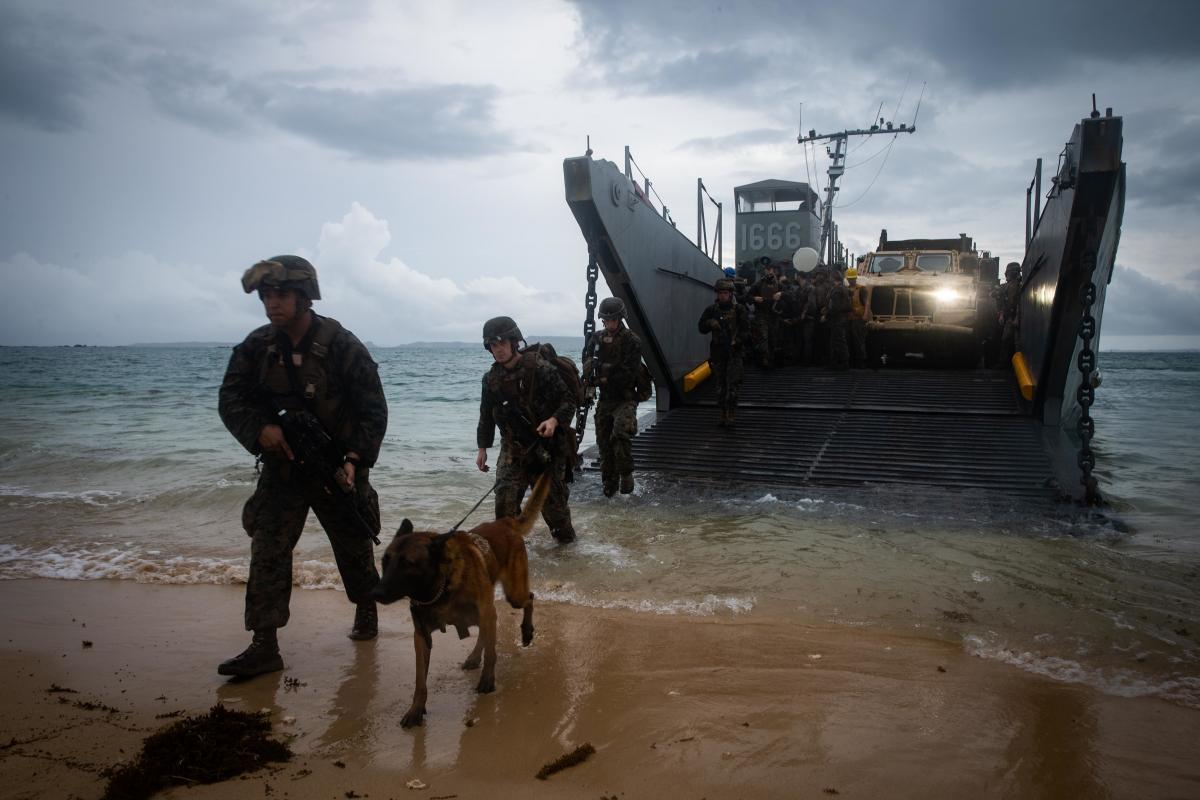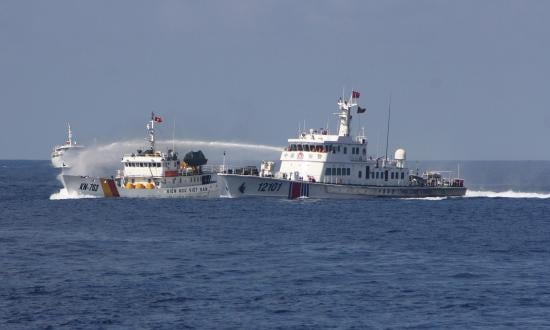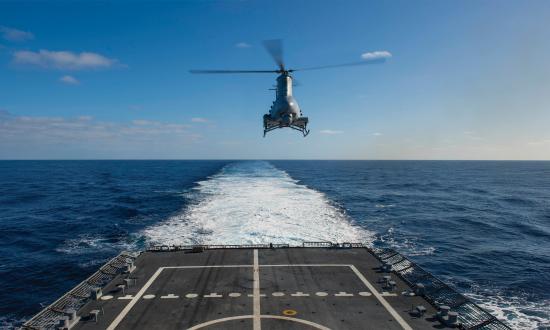The Global War on Terror ushered in a new era of warfare for the United States and the Marine Corps. Gone were the days of Desert Storm, when the United States could simply flex its muscle and use its technological advantages to bring an enemy to its knees. But this muscle turned into the country’s Achilles heel, exposing it to devastating attacks from insurgents, cyber warriors, and the like. These enemies usually cannot be caught on a battlefield, but rather attack from the shadows, costing the country dollars and blood it cannot continue to pay. The wars in Iraq and Afghanistan led to the widespread adoption of counterinsurgency (COIN) tactics by the Army and Marine Corps to mitigate this weakness. The question is: As Marines begin to turn their attention back toward the Pacific, where China’s influence grows stronger daily, will these ideas work in the evolving problems of the region?
The answer lies in COIN, which has the potential, properly implemented, to enhance the United States’ fighting ability in this new environment in several ways. First, the age of unrestricted warfare opens big militaries to small wars, which COIN seeks to solve. Second, the cultural understanding COIN requires can provide unique solutions that are more adaptive to a changing environment. Third, COIN requires collaboration between the military and the government, aimed at the strategic alignment of policy and executive action, which will prove most effective in dealing with the threat China poses to the world.
General David Berger’s Commandant’s Planning Guidance discusses in detail how “in any future conflict, we will face challenges in maneuvering and operating inside threat weapons engagement zones.” General Berger says expeditionary advanced base operations (EABO) will replace the aging Maritime Positioning Force which is, “quickly becoming not as relevant as in the past.” To operate inside the “weapon engagement zone” will require more than offloading supplies and equipment. Surviving and thriving in this dangerous environment will require a knowledge of the surrounding area that only the local population can provide.
The steps taken by Marines practicing COIN in the Middle East and Southwest Asia can be applied in EABO. Understanding the local population and culture and helping them could potentially lead them to assist future operations. In his book The Accidental Guerilla, COIN expert David Kilcullen speaks to this idea in reference to the surge in Iraq in 2007, saying that “by engaging with the local people, building local allies at the grassroots level, we could re-create the leverage we needed to stabilize the environment.” Iraq was saved from the brink of disaster as local populaces provided the necessary support to beat back al-Qaeda.
In the Pacific, this same sort of leverage could be used to sustain troops, escalate their lethality and even equip them. This could realistically occur in places around the South China Sea, anywhere China contests control with the Philippines, Vietnam, Taiwan, and others. If Marines wind up on these islands, the support provided from local communities will be key in giving the forces an advantage in that theater.
Cultural and political immersion can generate considerable results for Marines engaged in COIN. The observe, orient, decide, act (OODA) loop properly applied encourages Marines to avoid simply living inside existing paradigms or mental models. COIN demands a corresponding mind-set: Marines must continually rebuild their perceptions of the environment and local populations. While this adjustment may take some time, it will prove the most enduring option.
However, COIN does not belong to the military alone. If there is no “policy” behind Carl von Clausewitz’s famous remark that “war is the continuation of policy by other means,” no amount of effort will keep the Marine Corps from failure at COIN. This is a common objection of COIN skeptics: The U.S. military was applying strategy without government policy to back it. U.S. Army Colonel Gian Gentile was one of the first to speak against COIN. In his article “A Strategy of Tactics,” he stated that he saw COIN operations as, “a total war without the commensurate total support of will and resources from the American people.” The military arm was missing the political force behind it. Consequently, the military was limited in how successful its operations could realistically be.
The Marine Corps must avoid this dilemma and instead use the COIN model to work closely not only with local populations, but also with the rest of the U.S. government. Together, they should create a clear strategy, as well as use other, more appropriate resources to address the problems Marines meet in the Asia-Pacific region. Resources were not aptly utilized in the Middle East, and the United States struggled to fully and efficiently integrate non-government agencies. In How Everything Became War and the Military Became Everything, author Rosa Brooks writes: “At best, the military has a mixed track record when it comes to performing traditionally civilian functions as providing humanitarian assistance, government support, and development aid.”
Much of building alliances in the Asia-Pacific region will revolve around building trust with local populations. Whether through humanitarian aid or civil affairs, the Marine Corps should look to involve aid organizations and the State Department, which should be leading this charge to garner local trust and support. The War on Terror saw a shift, Brooks says, as the Department of Defense began “funding what [the State Department] saw as classic public diplomacy projects.” Taking up such projects without intragovernmental consulting and failing to use the full range of tools the United States has to offer was a significant misstep. While Marines are trained for certain operations and a specific way of thinking, civilians and government professionals have different perspectives and experiences and can often provide solutions that may be overlooked by a strictly military-trained mind. When operating in the Asia-Pacific theater, media, public relations and outreach, and many other fields will be vital. Thinking the Marine Corps is all-knowing in these realms, or that it can act as its own political arm, will only waste energy and resources. The Marine Corps must know its own strengths and weaknesses and accept the tools available to offset the latter to accomplish the mission.
The Marine Corps must continue to remember every lesson: counterinsurgency, amphibious landing, urban warfare, etc. Many modern political and military strategists desire to lay to rest the wars of old, along with their tactics and models. This may seem easy and straightforward now, in light of the painful lessons on counterinsurgency learned in the past 20 years, but the suffering that could result from unsuccessful operations in the Pacific with a rising China would be much worse. Today’s challenges are more complex than most of those faced in recent memory, and they require careful consideration of every perspective from history to succeed. Applying COIN—correctly—is the only path that will give us an advantage while facing the beast of an enemy that is an accelerating China.







